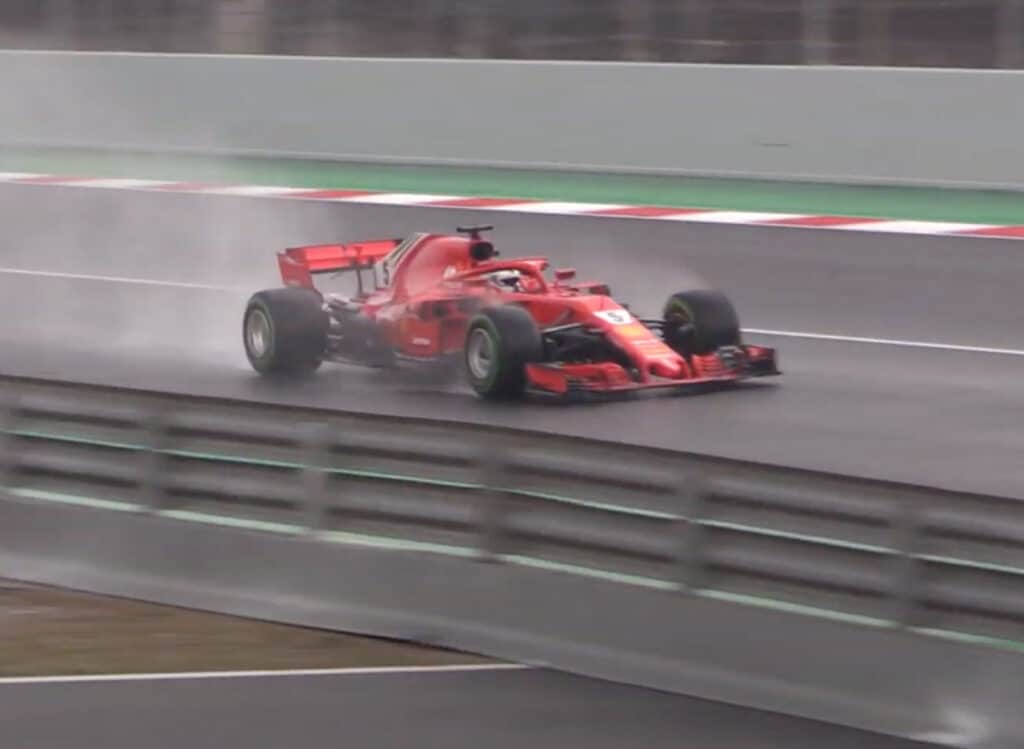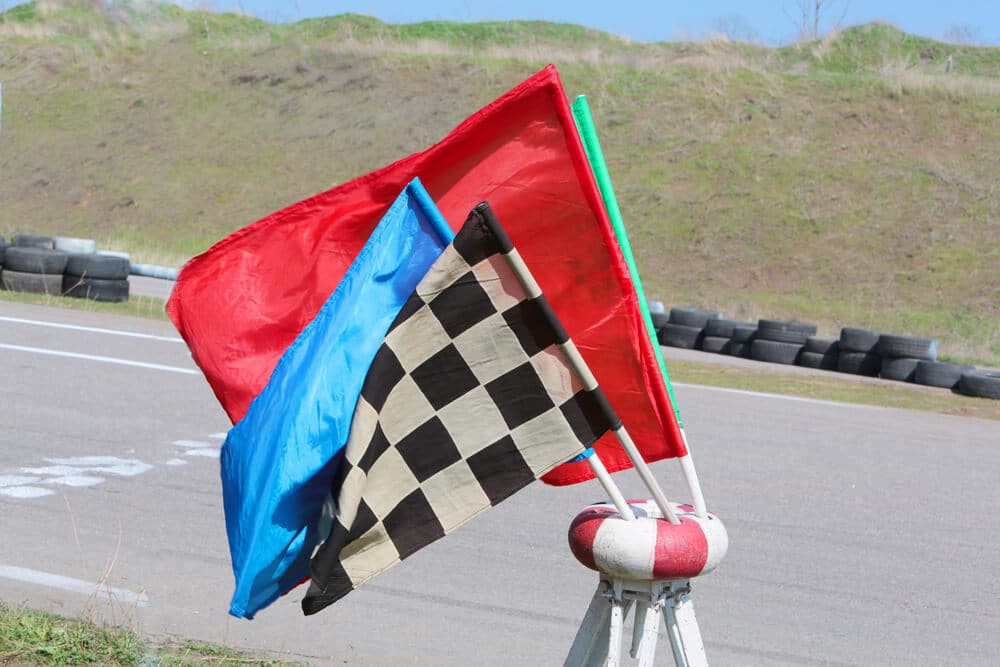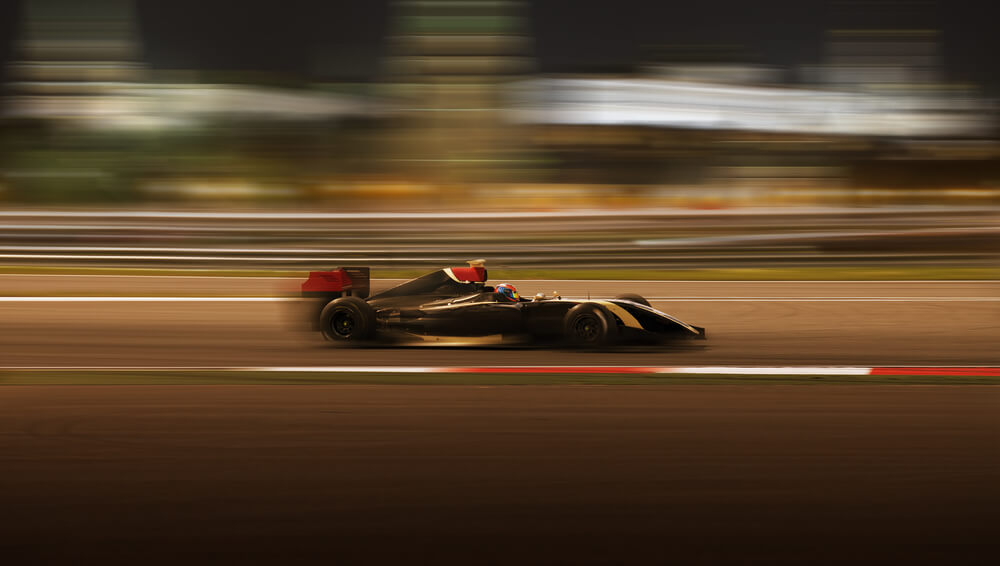If you’re a Formula 1 fan, you’ve probably heard of the term aquaplaning before. But what does it mean?
And more importantly, how can it affect the outcome of a race?
In this blog post, we will provide a simple explanation of aquaplaning in Formula 1 and discuss its potential impacts on drivers and races.
Table of Contents
Watch this video to understand aquaplaning.
What is aquaplaning in F1?
Aquaplaning is when a layer of water builds up between the tires and the track, causing the tires to lose contact with the road and the car to slide. When the grip on the car is suddenly lost, the spins uncontrollably.
This can be extremely dangerous as it can cause the driver to lose control of the car. Aquaplaning usually occurs during heavy rainstorms, but can also occur if there is a sudden downpour on a dry track. Aquaplaning can happen at any speed but is more likely to occur at high speeds.
Key takeaways
Here are the key takeaways of aquaplaning in F1:
- Aquaplaning is when a layer of water builds up between the tires and the road surface, causing the tires to lose contact with the road.
- This can happen at high speeds and can cause the driver to lose control of the car.
- Aquaplaning can be treacherous and dangerous, and it can have a big impact on the outcome of a race.
- If you’re watching a Formula One race and you see a car aquaplaning, it’s likely that the driver will lose control and spin out. In some cases, aquaplaning can even cause crashes.

Understanding aquaplaning
Now that we’ve explained what aquaplaning is, let’s dive a little deeper and understand how it can impact a Formula One race.
What leads to aquaplaning?
1. Heavy rainfall
Aquaplaning can be caused by a number of things, but the most common cause is heavy rainfall. When it rains heavily, water can build up on the track and create a layer between the tires and the road. This can happen at any speed but is more likely to occur at high speeds.
2. Sudden downpour on a dry track
Another common cause of aquaplaning is a sudden downpour on a dry track. This can happen if there’s been a light rain earlier in the day, and then it suddenly starts raining heavily. The water can build up quickly and cause aquaplaning.
Wet weather tyres are designed to displace water and provide better grip on a wet track. They have special grooves that help channel water away from the contact patch between the tyre and the road.
Wet track tyres helps
Now that we know what can cause aquaplaning, let’s talk about how it can be prevented. One of the best ways to prevent aquaplaning is to have wet weather tyres on your car.
Wet weather tyres are designed to displace water and provide better grip on a wet track. They have special grooves that help channel water away from the contact patch between the tyre and the road. This helps to improve grip and prevents aquaplaning.
However, even with wet weather tyres, aquaplaning can still occur if the conditions are severe enough. In such cases, the driver will have to be extra careful and may need to slow down to avoid aquaplaning.
Yes, a Formula One race can be postponed because of heavy rain. This usually happens if the conditions are too dangerous to race in.
Can a Formula 1 race be postponed because of heavy rain?
Yes, a Formula One race can be postponed because of heavy rain. This usually happens if the conditions are too dangerous to race in.
For example, if there is aquaplaning on the track, it may be too dangerous for the cars to race.
In such cases, the race may be postponed until the conditions improve. This can happen if the rain stops or if the track dries out.
How can drivers deal with aquaplaning?
There are a few things that drivers can do to deal with aquaplaning:
The most important thing is to be aware of the conditions and to know when aquaplaning is likely to occur. If it’s raining heavily, drivers should be extra careful and look out for wet patches on the track.
The most important thing is to be aware of the conditions and to know when aquaplaning is likely to occur. If it's raining heavily, drivers should be extra careful and look out for wet patches on the track.
If they see a car ahead of them aquaplaning, they should be prepared to slow down or take evasive action. Another important thing is to have the right tyres for the conditions. Wet weather tyres can help to improve grip and prevent aquaplaning.
Frequently asked questions about aquaplaning
What is the best way to prevent aquaplaning?
At what speed does aquaplaning occur?
Is aquaplaning possible when the car is slow?
Conclusion
Aquaplaning is a dangerous phenomenon that can occur when driving in wet conditions. It happens when water builds up on the road and causes the tyres to lose contact with the road.
It can be prevented by having wet weather tyres on your car, and drivers should be extra careful in wet conditions. If aquaplaning does occur, the driver should slow down and be prepared to take evasive action.
Now that you know what Aquaplaning is, you should be able to recognize it if it happens during the race.




